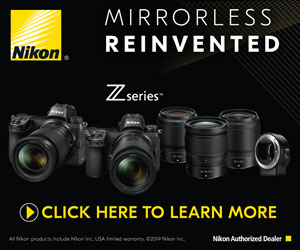Off-Camera Flash Optical Sync
There are many ways to trigger an off-camera flash so lets start with the very basics. Getting the flash off your camera gives you much greater control of your light and far more freedom to be creative. There are four basic ways to trigger your off-camera flash. Optical sync, where you trigger the flash with another flash, PC Sync, where you trigger the flash with a PC Sync cable that attaches to your camera and to the flash, Infrared, where you are using an infrared signal to communicate between your camera and your flash, and, Radio, where you use radio triggers to sync your flash. All of these methods work and offer different challenges, pros and cons. The most basic and least expensive may be optical sync, provided you have a built-in flash on your camera.
In this video, I set my Fuji X100’s built-in flash to commander mode. I used commander mode, because when triggering optically, I don’t want the built-in flash to greatly affect the flash exposure. Thus, producing a pulse of light adequate to trigger the flash, but not too much so that it will mix with the flash exposure from the off-camera flash.
Optical Sync Pros:
– Low cost triggering system (provided you have a built-in flash)
– You can optically trigger as many lights as you want so long as they all see the master flash.
– Easy. Not much to know other than the basics.
– Effective. It works.
Optical System Cons:
– Limitation of proximity. Your off-camera flash needs to see the flash your camera produces.
– Not recommended in bright sun. If you can see that bright light, so can your flash.
– Other flashes will trigger your flash! So not recommended for events or parties.
Ideal for a controlled environment, shooting portraits, product etc.
Some other thoughts. There are times when you may want your built-in flash to produce more power in order to act as a fill. Why not? It’s another light and may help to get you the look you need for your exposure. I do recommend that when you are using this technique, that you get your main or Key light dialed in before you decide to add power to the built-in flash for your exposure. This way, you are making a choice on how you want your light shaped and not fighting the two lights to make them work. Sounds complicated, well, it is. Lots to consider. So, for the time being, try simply optically syncing your off-camera flash. See how it goes. Experiment with placement, flash-to-subject distance, flash power. Have fun and be creative!
Please subscribe and leave your questions and comments below.




